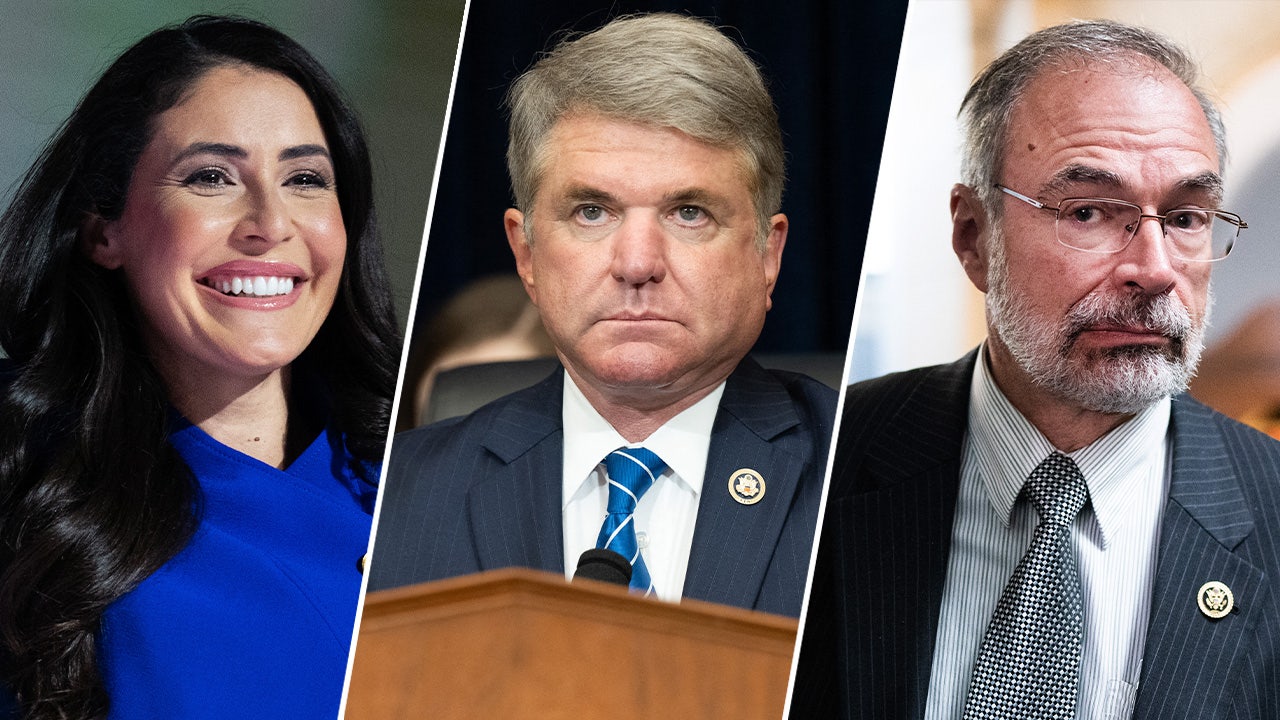New York
New York’s Biggest Landfill Could Get Even Bigger

It’s tough to miss Seneca Meadows, New York state’s largest landfill: Rising nearly 300 feet tall, it’s almost as tall as the Statue of Liberty, including its pedestal.
A decades-old depository of millions of tons of garbage, sprawled over more than 350 acres, it’s an artificial overlook visible from miles away. For homes to the east, it causes an early sunset.
And then, of course, there’s its odor, an ever-shifting stench which has inspired comparisons to dumpsters and dirty diapers, rancid meat and rotting fruit, as well as online maps of where “it stinks.”
But for the past several years, it seemed as though the olfactory abuse might soon be ending: According to state permitting, the landfill was set to close at the end of 2025.
Now, however, the landfill’s owner, the Texas-based Waste Connections, has indicated in filings with the state that it wants approval to fill a 47-acre “valley” between two of the site’s gigantic mounds — enough to fill MetLife Stadium 10 times, at least — a project it estimates would last until 2040.
That project would raise the peak of Seneca Meadows by about 70 feet — roughly to the height of a 35-story building — making it one of the tallest man-made structures in upstate New York and an odoriferous outlier in the largely bucolic Finger Lakes region.
Residents in and around Seneca Falls have long complained about a bevy of problems related to the site, including truck traffic, choking dust and the potential for landfill runoff — known as leachate — to contaminate drinking water.
They recount tales of “trash blowouts” where an exterior wall of dirt collapses, resulting in a cascade of garbage. Flocks of pesky sea gulls, looking for free food, circle constantly, depositing their guano on roofs, cars and customers in nearby shopping centers.
Even supporters of the landfill, whose oldest sections date back to the 1950s, admit they’d love it if Seneca Meadows — and all its associated ills — wasn’t there.
“If we had to make a decision today, with what we know, then obviously there would be no landfill there,” said Michael J. Ferrara, the Seneca Falls town supervisor and a lifelong resident, who has backed the expansion plan. “But it’s been here a long time.”
Keeping the landfill open likely makes the company a better neighbor, he suggested.
“They’re not going to take the landfill with them: It will still be here, unfortunately,” said Mr. Ferrara. “If it’s open, they have to tend to it a lot more.”
Waste Connections representatives declined to comment on their critics or the “valley infill” project, which is currently being evaluated by the state’s Department of Environmental Conservation.
The site’s district manager, Kyle Black, directed a reporter to the Seneca Meadows website for details on current operations and the expansion plan, which the company’s initial application says is needed “to provide critically needed solid waste disposal services locally and for the state.”
That stream of garbage is undeniable: More than two million tons arrives yearly via thousands of trucks roaring off the New York State Thruway. According to the company’s 2021 annual report — the most recent available — that deluge of trash includes solid waste, construction debris and a category known simply as “sludge.”
The refuse comes from all over the state, and farther afield, but its single biggest source is New York City, which sent about a quarter of the total haul in 2021, averaging about 1,500 tons daily.
The plan to expand has prompted an outcry from many environmentalists and business owners in the two neighboring communities: Seneca Falls, known as both the birthplace of the women’s rights movement and a supposed inspiration for “It’s a Wonderful Life,” and Waterloo, which claims to be the birthplace of Memorial Day.
In February, hundreds signed a letter to Gov. Kathy Hochul, a Democrat, pleading with her to stop the expansion, noting a range of problems with landfills, including ample emissions of “climate-destroying greenhouse gases” like methane.
Others accuse the company of buying off town board members in Seneca Falls via large campaign expenditures on behalf of landfill-friendly candidates by a group known as Responsible Solutions for New York. The group received at least $195,000 in donations from Waste Connections since the beginning of 2019, according to state election records.
One of those winning candidates in 2021, Kaitlyn Laskoski, a Republican, denied that she knew anything about the Responsible Solutions group, saying she was “just as surprised” when she received mailers paid for by the group supporting her campaign. She added she had not formed an opinion on the expansion yet, saying she wanted to “ensure the proper procedure is followed.”
Earlier this month, there were signs that the expansion could face some official local opposition, when the town board — including Ms. Laskoski — voted to table a lucrative agreement with Waste Connections.
The leachate produced by the site — around 200,000 gallons a day, on average — is particularly troubling for activists like Joseph Campbell and Yvonne Taylor, two of the founders of Seneca Lake Guardian, a group which seeks to safeguard the waters of the Finger Lakes.
According to the company’s 2021 report, tens of millions of gallons of that leachate — tainted by toxic substances like arsenic and a range of dangerous chemicals — was collected and shipped to treatment facilities around the state, including to Buffalo, Ms. Hochul’s hometown. But environmentalists there and elsewhere have raised alarms about the ability of such public systems to handle some of those toxins.
“We’re an American viticultural area,” she said. “It supports a 60,000 job, $3 billion industry here, tourism and agriculture, which all depends on clean air and clean water for survival.”
The opposition also includes the landfill’s neighbor, Waterloo Container, a bottle wholesaler just across Route 414, whose employees have complained of “a sewer odor” that makes them nauseous and sends them scrambling to close warehouse windows.
Bill Lutz, the company’s president and a longtime local resident, said the landfill had profoundly altered “the complete environment in two townships.”
“They’ve changed the air quality, they’ve changed the temperature,” said Mr. Lutz, noting that the decomposition inside the landfill generates “so much heat” that Central New York’s punishing winter snows often won’t accumulate on the site.
A final version of the company’s plans are likely to be released in coming weeks and will face an array of state environmental reviews. Its prospects could be complicated by the state’s ambitious plan to reduce emissions, passed in 2019.
The Department of Environmental Conservation said it was reviewing hundreds of public comments it has received since the landfill expansion was proposed.
The trucking of rubbish upstate continues even as New York City has taken steps in recent months to try to address too much trash. In June, the City Council passed a package of bills that mandates curbside composting, and that established a target date of 2030 to eliminate all organic matter and recyclables from its waste stream.
Sandy Nurse, a city councilwoman from Brooklyn who sponsored several of those bills, says she supports closing Seneca Meadows.
“We just toss it out and think it goes away and it doesn’t,” Ms. Nurse said.
She noted that the city was spending some $450 million annually to ship its trash to other states as well as upstate New York.
Frank Sinicropi, another board member in Seneca Falls who backed the host agreement with the landfill, was blunt. “Ask the mayor of New York City,” he said, “where the city trash will go.”
Waste Connections seems well aware of the public relations challenges: The company has a complaints hotline, which results in a site visit by a landfill representative and a formal report, though some residents complain that those reports are usually deemed inconclusive.
The landfill managers also use a variety of methods to try to mitigate the odors, including aerators which release a flowery-scented mist along the periphery of the site.
The Seneca Meadows website says that the company works to collect the methane released by decomposition, using some of it to generate electricity, and adding that the waste it accepts is “nonhazardous.”
Mr. Black said in an email that the company provides dozens of jobs at the landfill and dozens more in construction and operations.
The company has been active in community organizations and events, including in late July, when hundreds of locals flocked to the Seneca Meadows Open House, lining up for a bouncy house and free barbecue chicken, a vintage car show and a demonstration of live falconry. (The company uses about a dozen of those black-eyed raptors to scare off the sea gulls).
Perhaps the most popular attraction were the tours of the dump that loomed above the open house, with buses slowly inching up the incline to the top, which offers impressive views of the landfill — and landscape — as well as the piles of shredded rubber tires used in the landfill’s liner system.
These outreach efforts have resonated with people like Bill Ryan, 74, a retired accountant and longtime resident of Waterloo, who said he believed that Seneca Meadows was a “wonderful thing for the community” — noting the jobs and various local events they supported, including the Friday night fireworks display at this year’s county fair.
Standing at the fairgrounds, just beyond the landfill’s boundaries, Mr. Ryan said that the complaints about the stink were overdone.
“Smell is a nuisance,” said Mr. Ryan, who was sporting a Seneca Meadows hat. “Smell is not a hazard.”
Audio produced by Sarah Diamond.

New York
Video: Adams’s Former Chief Adviser and Her Son Charged With Corruption

new video loaded: Adams’s Former Chief Adviser and Her Son Charged With Corruption
transcript
transcript
Adams’s Former Chief Adviser and Her Son Charged With Corruption
Ingrid Lewis-Martin, who resigned as Mayor Eric Adams’s chief adviser, and her son, Glenn D. Martin II, were charged with taking $100,000 in bribes from two businessmen in a quid-pro-quo scheme.
-
We allege that Ingrid Lewis-Martin engaged in a long-running bribery, money laundering and conspiracy scheme by using her position and authority as the chief adviser of — chief adviser to the New York City mayor, the second-highest position in city government — to illegally influence city decisions in exchange for in excess of $100,000 in cash and other benefits for herself and her son, Glenn Martin II. We allege that real estate developers and business owners Raizada “Pinky” Vaid and Mayank Dwivedi paid for access and influence to the tune more than $100,000. Lewis-Martin acted as an on-call consultant for Vaid and Dwivedi, serving at their pleasure to resolve whatever issues they had with D.O.B. on their construction projects, and she did so without regard for security considerations and with utter and complete disregard for D.O.B.’s expertise and the public servants who work there.
Recent episodes in New York
New York
Read the Criminal Complaint Against Luigi Mangione

UNITED STATES DISTRICT COURT
SOUTHERN DISTRICT OF NEW YORK
UNITED STATES OF AMERICA
V.
LUIGI NICHOLAS MANGIONE,
Defendant.
SOUTHERN DISTRICT OF NEW YORK, ss.:
Original
AUSAS: Dominic A. Gentile,
Jun Xiang, Alexandra Messiter
24 MAG 4375
SEALED COMPLAINT
Violations of
18 U.S.C. §§ 2261A, 2261(b), 924(j), and
924(c)
COUNTY OF OFFENSE:
NEW YORK
GARY W. COBB, being duly sworn, deposes and says that he is a Special Agent with the
Federal Bureau of Investigation, and charges as follows:
COUNT ONE
(Stalking – Travel in Interstate Commerce)
1. From at least in or about November 24, 2024 to in or about December 4, 2024, in
the Southern District of New York and elsewhere, LUIGI NICHOLAS MANGIONE, the
defendant, traveled in interstate commerce with the intent to kill, injure, harass, intimidate, and place
under surveillance with intent to kill, injure, harass, and intimidate another person, and in the
course of, and as a result of, such travel engaged in conduct that placed that person in reasonable
fear of the death of, and serious bodily injury to, that person, and in the course of engaging in such
conduct caused the death of that person, to wit, MANGIONE, traveled from Georgia to New York,
New York for the purpose of stalking and killing Brian Thompson, and while in New York,
MANGIONE stalked and then shot and killed Thompson in the vicinity of West 54th Street and
Sixth Avenue.
(Title 18, United States Code, Sections 2261A(1)(A) and 2261(b)(1).)
COUNT TWO
(Stalking – Use of Interstate Facilities)
2. From at least in or about November 24, 2024 to in or about December 4, 2024, in
the Southern District of New York and elsewhere, LUIGI NICHOLAS MANGIONE, the
defendant, with the intent to kill, injure, harass, intimidate, and place under surveillance with intent
to kill, injure, harass, and intimidate another person, used an electronic communication service and
electronic communication system of interstate commerce, and a facility of interstate or foreign
commerce, to engage in a course of conduct that placed that person in reasonable fear of the death
of and serious bodily injury to that person, and in the course of engaging in such conduct caused
the death of that person, to wit, MANGIONE used a cellphone, interstate wires, interstate
New York
Video: Luigi Mangione Is Charged With Murder

new video loaded: Luigi Mangione Is Charged With Murder
transcript
transcript
Luigi Mangione Is Charged With Murder
The first-degree murder charge branded him a terrorist over the killing of UnitedHealthcare’s chief executive, Brian Thompson.
-
We are here to announce that Luigi Mangione, the defendant, is charged with one count of murder in the first degree and two counts of murder in the second degree, including one count of murder in the second degree as an act of terrorism for the brazen, targeted and premeditated shooting of Brian Thompson, who, as was as you know, was the C.E.O. of UnitedHealthcare. This was a frightening, well-planned, targeted murder that was intended to cause shock and attention and intimidation. It occurred in one of the most bustling parts of our city, threatening the safety of local residents and tourists alike, commuters and businesspeople just starting out on their day.
Recent episodes in New York
-
/cdn.vox-cdn.com/uploads/chorus_asset/file/25672934/Metaphor_Key_Art_Horizontal.png)
/cdn.vox-cdn.com/uploads/chorus_asset/file/25672934/Metaphor_Key_Art_Horizontal.png) Technology1 week ago
Technology1 week agoThere’s a reason Metaphor: ReFantanzio’s battle music sounds as cool as it does
-

 News1 week ago
News1 week agoFrance’s new premier selects Eric Lombard as finance minister
-

 Business7 days ago
Business7 days agoOn a quest for global domination, Chinese EV makers are upending Thailand's auto industry
-

 Health3 days ago
Health3 days agoNew Year life lessons from country star: 'Never forget where you came from'
-
/cdn.vox-cdn.com/uploads/chorus_asset/file/24982514/Quest_3_dock.jpg)
/cdn.vox-cdn.com/uploads/chorus_asset/file/24982514/Quest_3_dock.jpg) Technology3 days ago
Technology3 days agoMeta’s ‘software update issue’ has been breaking Quest headsets for weeks
-

 World1 week ago
World1 week agoPassenger plane crashes in Kazakhstan: Emergencies ministry
-

 Politics1 week ago
Politics1 week agoIt's official: Biden signs new law, designates bald eagle as 'national bird'
-

 Politics5 days ago
Politics5 days ago'Politics is bad for business.' Why Disney's Bob Iger is trying to avoid hot buttons
















